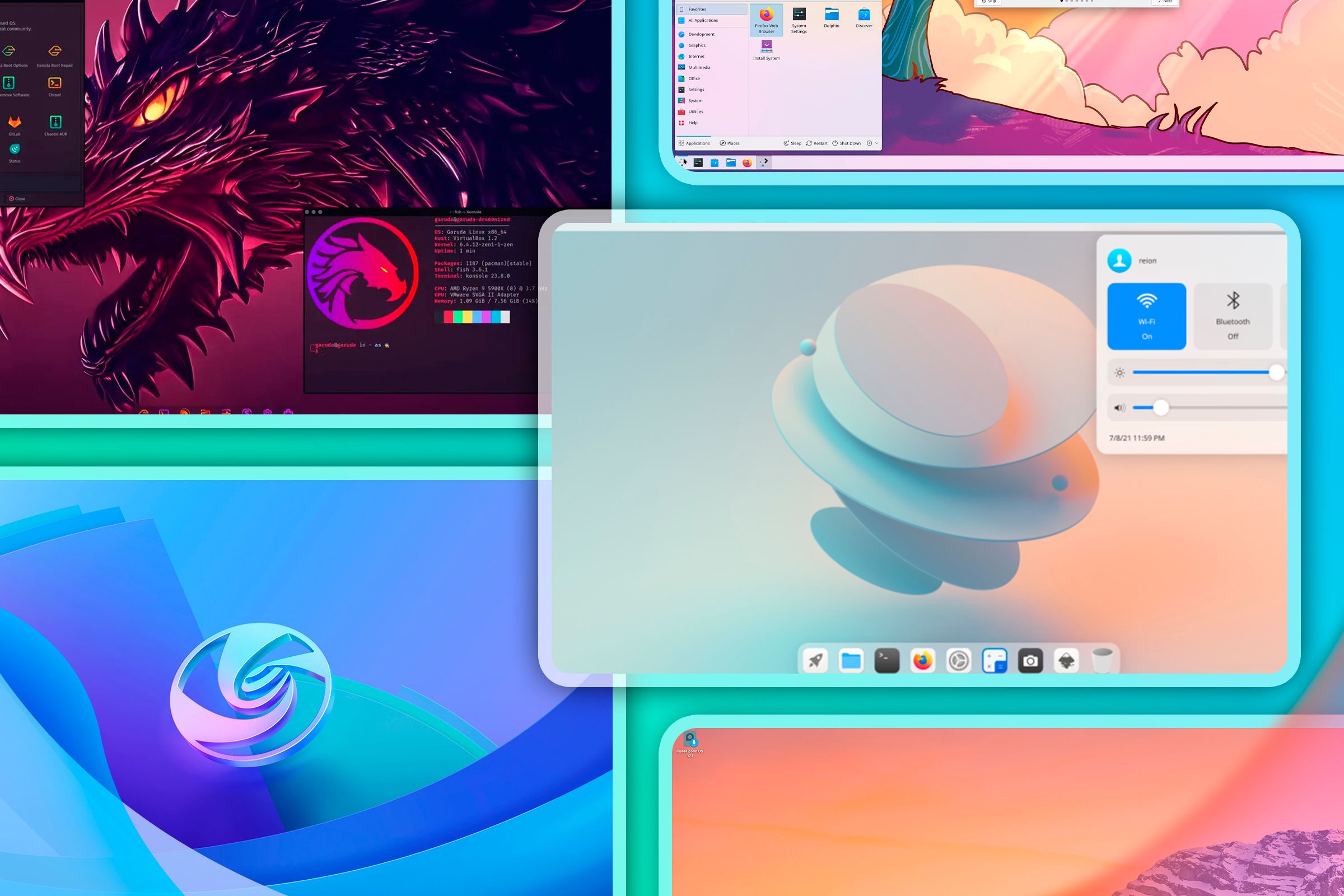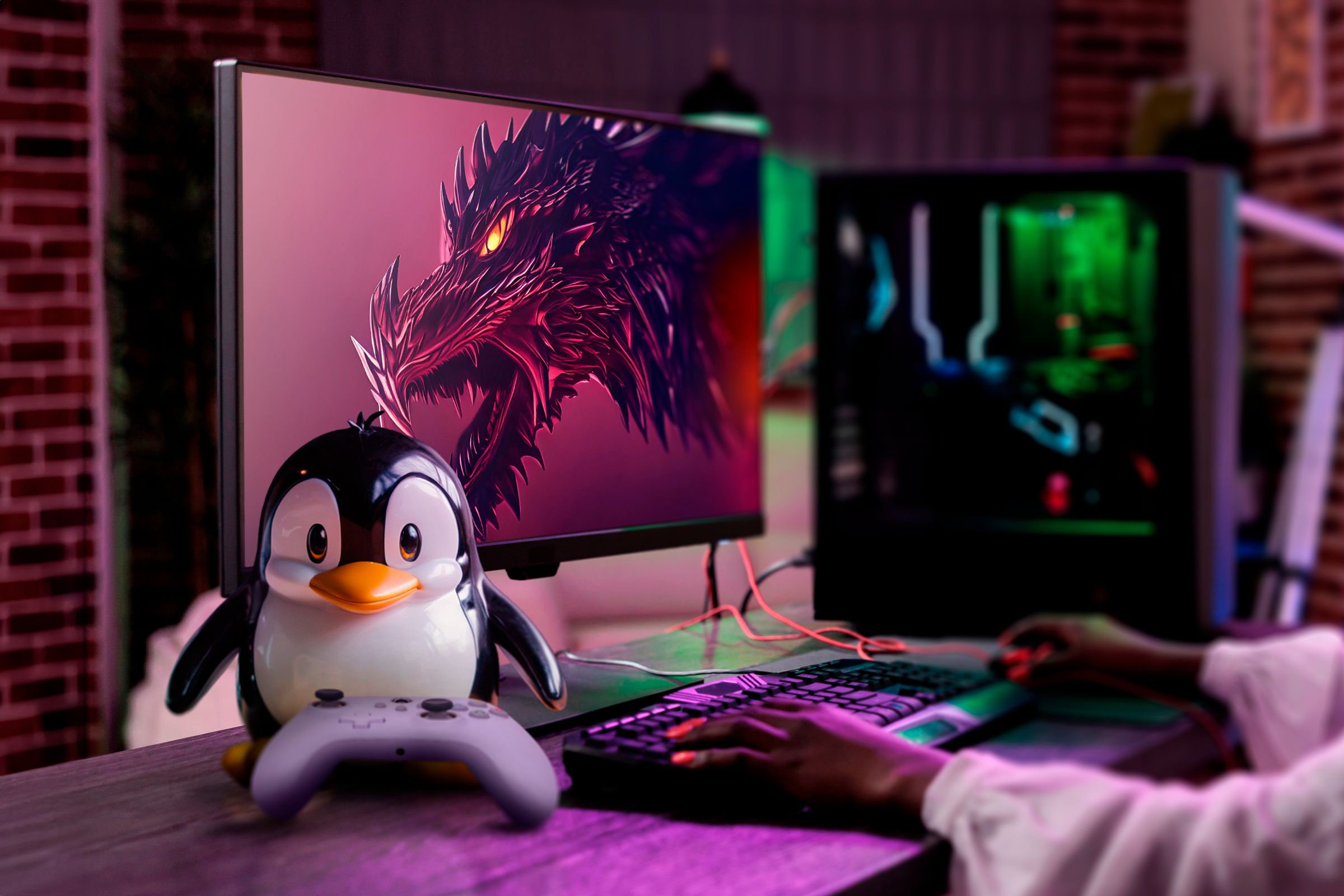Linux has a reputation as the operating system for old and weak hardware, but did you know it can supercharge your high-end PCs and Laptops as well? Here are five Linux distributions (distros) that are designed to take full advantage of modern hardware to deliver stellar performance.
The world of Linux is brimming with hundreds if not thousands of distributions. The benefit of having this many options is that you have different operating systems specifically designed for different users and use cases. However, the clear disadvantage is that it leads to analysis paralysis! Luckily you have me, and if you’re looking for a distro for your new PC or laptop, then I’ve got you! Here is a list of five distros optimized for modern hardware which, in fact, might lag if run on older and weaker systems.

Related
5
Ubuntu Studio
Ubuntu Studio is an official flavor of Ubuntu specifically designed for creative professionals. It uses Ubuntu’s rock-solid foundation as its base but applies some tweaks and optimizations to make creative workflows much smoother and more responsive.
The distro also overhauls Ubuntu’s default look with a Windows XP-style design, but with the task bar up top. You also get the same XP-style start menu that perfectly categorizes and organizes all your creative apps. That being said, it’s using the KDE Plasma desktop, giving you access to tons of customization options which should instantly appeal to the creative in you.
There is a tool called Ubuntu Studio Installer that you can run on any Ubuntu-based distro to get these specific optimizations and apps installed on that system.
What Makes Ubuntu Studio Great for High-End Systems
- Ships with pre-configured creative apps for audio, video, and graphics workflows to save you hours of manual installation and configuration.
- Includes a low-latency kernel to speed up real-time audio and video processing.
- Specialized tools like the Ubuntu Studio Audio Configuration utility give you a graphical interface to tweak audio settings—saving you from fumbling around the terminal.
Why Ubuntu Studio Might Not Be for You
- If you don’t need a complete suite of creative software, it can feel bloated.
- The system optimizations are useful for creative workloads, but not for gaming.
- Being a Linux distro, it lacks access to many closed-source creative tools like the Adobe apps.
|
Best For |
|
|---|---|
|
Minimum Requirements |
|
|
Download Link |

Related
Meet Ubuntu Studio, a Linux Distro & Software Toolbox for Creatives
Ubuntu Studio is more than just a Linux distribution. It’s a creative toolbox for anyone using an Ubuntu-based distro.
4
Pop!_OS
Similar to Ubuntu Studio, Pop!_OS is based on Ubuntu, but it’s not one of its official flavors. Instead, it’s developed by System76, a computer hardware manufacturer selling laptops, desktops, and servers. Since they sell modern high-end hardware, they have taken a lot of care and effort in building their own distro that takes full advantage of this raw power.
Of course, even if you don’t buy System76 hardware, you can download the Pop!_OS ISO and install it on your existing hardware. There’s an ISO file with proprietary NVIDIA drivers built-in which is recommended if you own an NVIDIA GPU. In fact, in my experience, it’s one of the best Linux distros that run smoothly on NVIDIA hardware without much manual tinkering.
At the time of writing, Pop!_OS is actively developing a new desktop experience called COSMIC, which will replace their current implementation of the GNOME desktop environment. Once released, I expect an overhauled user experience, but it should still remain an excellent distro for high-end hardware.
What Makes Pop!_OS Great for High-End Systems
- Vulkan drivers and libraries are preinstalled for better graphics performance out of the box.
- Easily switch between battery-saving and high-power modes to save battery or use your system’s full potential.
- The best OS if you’re buying hardware from System76.
Why Pop!_OS Might Not Be for You
- As an Ubuntu-based distro, its updates trail behind Ubuntu. The current version of Pop!_OS is based on the 3-year-old Ubuntu 22.04 LTS release.
- The overall customized GNOME desktop experience might feel alien if you’re new to Linux, especially if you’re coming from Windows.
|
Best For |
|
|---|---|
|
Minimum Requirements |
|
|
Download Link |
3
Garuda Linux
Garuda Linux is an Arch-based rolling release distro targeting power users looking for a unique-looking desktop that feels nice and polished to use. It supports a number of popular desktop environments and window managers, but its flagship editions—Mokka and Dragonized—give you a re-imagined take on the KDE Plasma desktop environment with special animations and desktop effects that make it look absolutely stunning.
Apart from looks, the main highlight would be Garuda Rani, a system maintenance app that allows you to manage the distro from a graphical interface without needing to open the terminal. Other than this, being an Arch-based distro, you have access to the Arch User Repository (AUR), which packs tens of thousands of apps. You also get the Chaotic-AUR, which is maintained by the Garuda team and offers many more useful apps.
What Makes Garuda Linux Great for High-End Systems
- Brings specific system optimizations like the Zen Linux kernel and zRAM to better utilize your system hardware and deliver smoother, snappier performance.
- The Gaming edition comes with gaming-specific optimizations and tools built-in, which makes it a great choice for gaming on Linux.
- Proprietary NVIDIA drivers built-in promising excellent hardware support out of the box.
- Brings a visual flair that feels snappy and responsive only in modern systems.
Why Garuda Linux Might Not Be for You
- The bold design choices can be too flashy and in-your-face.
- Linux newcomers might find regular system maintenance work challenging and technically overbearing, even if no terminal is required.
- As a rolling release distro, you need to update it at least bi-weekly to maintain system stability.
2
Nobara
Nobara, in my opinion, is the definitive distro for Linux gaming and what you should use if you’re building a system specifically for gaming. It is based on Fedora, which is known for offering a stable yet cutting-edge experience, loved by many Linux power users. However, the main issue with Fedora is that it ships with open-source packages only, whereas most gaming-specific drivers and tools are proprietary, thereby requiring you to do a lot of manual tinkering before you can play games on it.
This is what Nobara solves by coming pre-configured with all the popular gaming tools, multimedia codecs, and proprietary drivers necessary for playing games or content creation out of the box. This means all you have to do is install the distro, and you have a system to start playing games on, provided that it runs on Linux. In fact, the distro even has a version to run on the Steam Deck as well as Home Theater PCs, making it one of the best console-class distributions.
What Makes Nobara Great for High-End Systems
- Includes a custom kernel with numerous patches to ensure better hardware support.
- Improved support for fractional scaling and variable refresh rates.
- Out-of-the-box support for proprietary NVIDIA drivers.
Why Nobara Might Not Be for You
- The distro is optimized for gaming and content creation—not for research or office-productivity work.
- As an unofficial Fedora-based distro, updates arrive about a month or so later than Fedora.
|
Best For |
|
|---|---|
|
(Same as Fedora) |
|
|
Download Link |
1
CachyOS
CachyOS is another Arch-based rolling release distro with a laser focus on performance optimization for modern hardware. To me, it feels like Manjaro Linux, but on steroids, where the focus is still on making Arch more user-friendly with graphical apps, so you don’t have to use the terminal too often. CachyOS is also much more feature-rich than Manjaro, making it a more appealing option for power users.
To give you an idea, CachyOS natively supports all the popular Linux desktop environments and window managers. Not just that, but it also supports most of the popular and performance-oriented Linux file systems. And, of course, as an Arch-based distro, you get access to the AUR. Also, if you own a handheld PC, CachyOS has got a dedicated installation ISO version.
What Makes CachyOS Great for High-End Systems
- Uses advanced optimization techniques like Link Time Optimization (LTO) and Binary Optimization and Layout Tool (BOLT) for snappier performance.
- Packages are optimized for modern processors like x86-64-v3, x86-64-v4, and Zen4 to extract maximum performance from the hardware.
- Delivers a better multitasking experience by using custom scheduling technology that maintains system responsiveness even when running many apps.
Why CachyOS Might Not Be for You
- As an Arch-based distro, you need to update it weekly or at least bi-weekly to maintain system stability.
- Not ideal for Linux newcomers who aren’t familiar with maintaining and troubleshooting Linux systems.
|
Best For |
|
|---|---|
|
|
|
Download Link |

Related
I Tried CachyOS, and Now It Might Be My New Main Distro
At first glance, CachyOS looks like another “Arch Linux but Easy” distro, but here’s why I’m such a fan of it.
Which Distro Should You Choose?
The right distro for your modern high-end PC (or laptop) depends on your specific use case. If you want a system primarily for content creation, go with Ubuntu Studio. However, if you want something specialized for gaming, pick Nobara!
That said, if you want a general-purpose distro that’s great for work and play, I’d recommend Pop!_OS. It’s stable, reliable, and doesn’t demand too much upkeep from you. However, if you prefer access to cutting-edge software and feel comfortable with the routine system maintenance, then go with CachyOS over Pop!_OS.
That leaves us with Garuda Linux, which is what I use as my daily driver! Performance-wise, it’s on par with CachyOS even though both distros approach system optimization in different ways. The unique strengths Garuda has going for it are its awesome system management tools—Garuda Rani, and the bold default look, which can take a long time to replicate on another distro.

Related
5 Popular Linux Distributions and Who They’re Meant For
Which popular Linux distro is meant for you?
How to Get Started
Now that you know which distros are better for your modern high-end PCs and laptops, it’s time to make your pick. Once you do, I’d recommend you try it out to get a sense of its user experience before directly installing it on your system. You can try VirtualBox to get an idea of how things work, but do note the performance can be a bit choppy since these distros are intended to run on bare metal.





